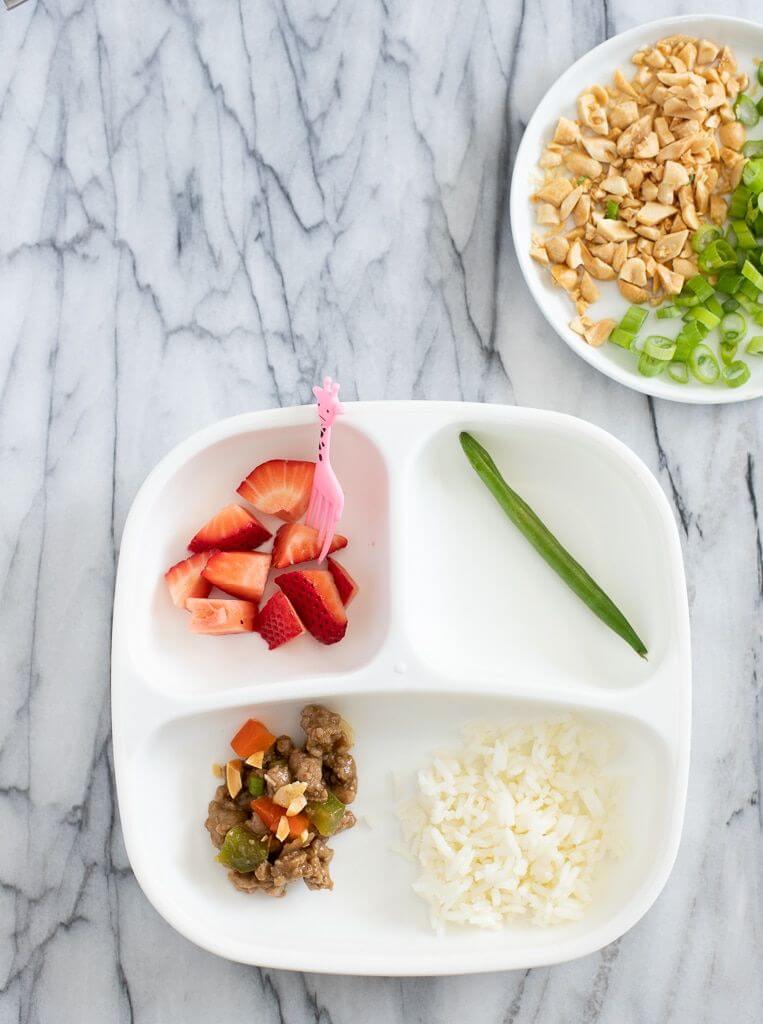How to Serve Turkey to Babies and Toddlers
Navigating the 2020-2025 Dietary Guidelines for Americans

In December 2020, the 2020-2025 Dietary Guidelines for Americans (DGA) was published, citing specific nutrition recommendations for babies and toddlers through 24 months, including the importance of incorporating lean protein into the diet. Previously, guidance for children under two years had not been included in these federal recommendations in a substantial way. However, the report indicates that this period of development is critical to establish nutritious eating habits that can last a lifetime.
The guidelines specifically highlight two nutrients that should be included for babies over 6 months old: iron and zinc.
At about 6 months old, introduce infants to nutrient-dense complementary foods…Encourage infants and toddlers to consume a variety of foods from all food groups. Include foods rich in iron and zinc, particularly for infants fed human milk.
Excerpt from the 2020-2025 Dietary Guidelines for Americans
And guess what lean protein has both? Turkey!
According to food blogger and nutrition specialist Emily Dingmann of My Everyday Table, the best way to do this is by preparing “one family meal” that can be easily adapted to satisfy the whole family. Dingmann prepares Turkey Stir-Fry for the whole family and answers some frequently asked questions about the best ways to adapt turkey for babies and toddlers below.
What does the DGA say about feeding babies and toddlers?

According to the DGA, the period between six months and two years of age is an important time to encourage babies and toddlers to try a variety of nutrient-dense foods: veggies, fruits, grains and lean proteins like turkey.
The idea of babies eating what everyone else is eating is not new. It is part of the baby-led-weaning approach, but it is a shift from the standard baby purees and puffs.
It is also recommended to avoid added sugars and foods higher in sodium.
Note: According to the DGA, it may take up to 8-10 exposures for an infant to accept new textures and flavors for the first time.
Can babies have turkey?
Yes. Once babies are six months old and eating solids, they can eat turkey. However, it is important to make sure portions are appropriate for their eating stage and not a choking risk.
How do you introduce turkey to a baby?

There are a few ways to do this. If going with a pureed approach, simply cook the turkey and puree it with some rice and veggies. When babies develop more hand control, they can start eating finger foods. Offer pea-sized pieces of soft foods like ground turkey and cooked veggies.
Try this Turkey Stir-Fry recipe for step-by-step instructions on adapting the dish for babies and toddlers.
Note: Toddlers and young children don’t always do well with food touching, so you may want to serve the meal components separate.
Should I choose one feeding method for babies?
Before you get caught up in a feeding method, don’t feel like you have to decide on one OR the other. It is reasonable to do a blend of purees and baby-led-weaning. There are a lot of strong opinions on these methods, but ultimately, decide what works best for you and your family. A mix of both is totally fine.
What matters is that you are feeding and exposing babies and toddlers to a variety of nutrient-dense foods and flavors.
When can I begin serving “one family meal?”
The DGA recommends babies and toddlers are exposed to a variety of nutrient-dense foods, similarly to what the entire family should be eating.
Regardless of the age of your children, my answer is always…NOW! The only exception is that your baby needs to be ready for solid food. So, bring them to the table and serve them what everyone is eating – one family meal!
